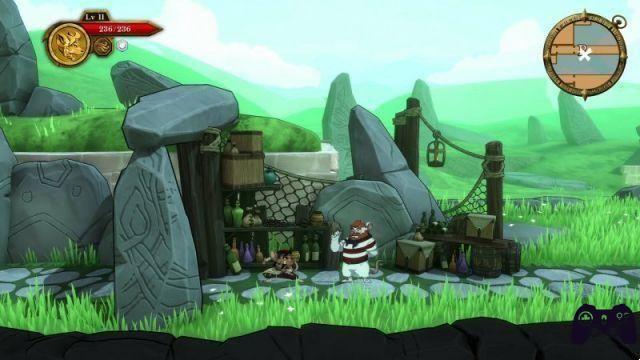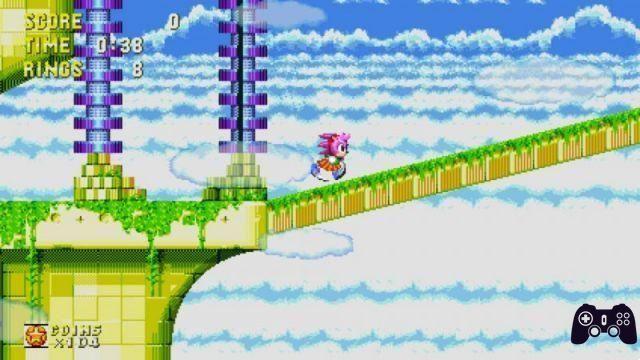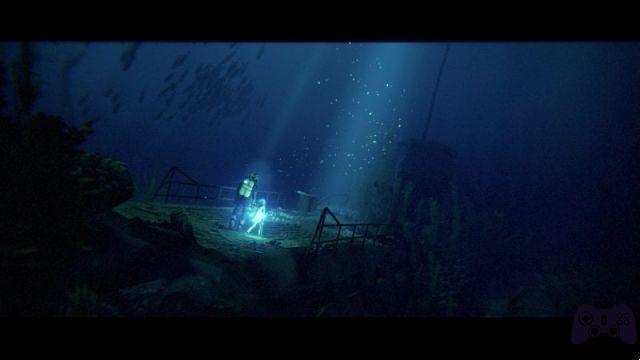
Almost twenty years have passed (17 to be precise) since the release of the first, unforgettable and unforgotten, chapter of Ubisoft's eggplant man. After that first episode, Rayman left his two-dimensional world looking for luck, first returning to the market with two direct sequels in three dimensions, and then "getting married" in the Rabbids series, from which in 2009, the year of the release of Rabbids Go Home, is "evicted" leaving all attention to the rabbits of the French software house. But the real heroes never throw in the towel and so Rayman tries again by going back to the origins, as gameplay (again in two dimensions) and as development (which again involves Michel Ancel, original creator of the series).
VERSION TESTED: PlayStation Vita
The emperor's new clothes
The adventure is initially playable with four characters: in addition (obviously) to Rayman it is possible to face the title in the role of Globox, the best friend of the protagonist introduced for the first time in Rayman 2, or of two Teens. As the Electoons are freed and collected, new costumes are unlocked for each character (for example, blue Rayman or red Globox, or the "evil" counterparts of the two heroes, or the Teens disguised as Rayman and Globox). This variety of customizations does not actually involve any changes and no changes in the level of play, as the adventure does not change depending on the character in use and the gameplay is still identical both in terms of challenge and attitude with respect to the various levels. , but simply offers (many) alternatives from the aesthetic point of view of the character. In addition to the protagonists, the game itself also appears on the market with "new clothes", woven using for the first time the new graphics engine owned by the French house, the UbiArt Framework. This engine is able, starting from any "normal" (and therefore static) image, to literally give it life, applying a sort of skeleton and indicating its joints, essentially allowing to animate them without imposing limits on the creativity of the Ubisoft artists. The result? Rayman Origins is in a nutshell a pearl from the point of view of level design: the world into which the player is catapulted is practically a living creature, in which the forested jungle scenarios of the first levels then give way to the most disparate settings, from “tribal” deserts to cross by jumping from drum to drum to icy lands enriched with typical cocktail decorations, complete with umbrellas. The environment of the levels is always able to respond to the actions and solicitations made by the characters of the game by modifying them accordingly, as well as having the advantage of being colorful, inspired and on balance original in terms of visual impact. The musical background is designed to adapt and follow the style of the level in the best possible way, boasting a variety of genres and musical instruments equal to that of the scenarios, ranging from winds to percussion instruments. In addition to the identification, the level design itself also benefits, which finds in the soundtrack an ally capable of participating in the characterization of the scenarios in a clear and, ultimately, irreplaceable way.
I want to become a real baby
But the UbiArt Framework does not limit itself to having a strong impact in terms of level design and setting: the four playable characters in fact are not satisfied with the great variety of costumes and customizations, but thanks to the new graphics engine they benefit from beautifully created animations, so much to be comparable to a cinematographic animation production. The animations of the protagonists are also fluid in the response to the stimuli and solicitations that the player exerts through the keys of the controller, and in general both the enemies and the protagonists are perfectly inserted within the levels, without presenting annoying cases of "detachment. "With the background. From the point of view of the animations therefore, Ubisoft does everything possible to try, in a certain sense, to bring the "world" of Rayman Origins outside the gaming stations, but at the same time it also works on the opposite process, trying to bring the player within the game. The settings in this regard are flanked by a sound sector which, as mentioned, does everything possible to benefit the overall experience, adapting to situations, scenarios and more generally to the type of level.
Fate Nymph godmothers
At the level of play, Rayman Origins does not differ much from the original chapter in two dimensions: at the beginning of the game the controls are reduced to the minimum wage, allowing (as well as obviously moving) only to jump and run, as if we were in front of a product of the "old school" as the first Super Mario. As you proceed with the adventure and face new worlds and levels, you meet the Nymphs, imprisoned inside the monster-cage that escape as soon as they meet. Once the Nymphs are released, they allow you to unlock new powers, such as attacking, gliding or running on walls, making the gameplay more and more complex and offering new solutions and strategies to deal with the levels, a speech that applies to both the levels faced and explored previously and especially for the levels not yet addressed, usually designed to take advantage of the new power just acquired, almost trying to "train" the player to use it. In practice, instead of a real tutorial, the developers decided to introduce the use of the new skills of Rayman and associates with "knowledge of the facts", putting the structure of the levels following the upgrades at the service of the players. The effect is to put everyone, from the neophyte who approaches the brand for the first time to the fan of the saga (already quite accustomed to the classic mechanics of the title and the powers of Rayman) in a position to fully enjoy the game. The levels are generally divided into four different categories: in addition to the "classic" platform levels in which you have to cross the scenario from start to finish looking for the cages where the Electoons are trapped, there are the boss fights (which consist in hitting some bubbles more or less hidden on the body of these, sometimes after having faced and passed a small "dungeon" in theme with the boss), the levels "on board" of the Bzzit mosquito (basically made as scrolling shooters in which you have to hit the enemies and avoid obstacles so as not to get out of the frame) and the “Treasure Hunt” levels, in which the goal is to cross the scenario avoiding obstacles in pursuit of a chest, accompanied by a ukulele background music. In each level it is also possible to collect the Lums, fireflies that in fact represent what the coins are in Super Mario, and based on the amount of Lums collected, collect additional Electoons. Precisely this aspect represents one of the most demanding challenges of the title, with some levels in which this operation requires ready reflexes to "bubble up" all the enemies and an accurate exploration of the surrounding environment in search of secrets, or others (such as levels a edge of Bzzit) where the quantity of Lum is small to the point of forcing the player to maximize the collection of these almost to the extreme.
The water of (PS) Vita
In the Vita version of Rayman Origins there is some difference compared to the home counterparts: some additions in terms of collectibles (which allow you to unlock some graffiti visible in the Yawning Tree, the "operational base" of Rayman and his supporting actors), some retouching in terms of gameplay to better adapt to the console and (unfortunately) the absence of multiplayer mode. Although the latter was a sort of half-successful experiment on home consoles (the multiplayer in these is however only local and in general makes the game easier, especially during boss fights, lowering the level of challenge of the title a little. ), on a portable console would in any case have benefited from the fun, also considering the possibility of playing it on the go. The latter is instead replaced by the Ghost mode, which allows you to challenge the “ghosts” of the developers or your friends (the latter by downloading them through Near) in the timed challenges, practically taken from the actual racing games. Speaking of the additional appreciable features, it is certainly worth mentioning the possibility of collecting the bubbles containing the Lums and blowing up the "bubbled" enemies using the console's touch screen, even if the real gem remains the possibility of zooming in during the sessions. game to better evaluate actions such as jumps or attacks, so that these are more accurate. Summing up, PSVita still remains the reference console despite the lack of multiplayer, as from a technical point of view it remains basically identical to the home counterpart with the advantage, however, of being potentially usable at any time, also thanks to the number of check-points. per level that goes well with a “hit and run” approach typical of portable and mobile games.
Verdict 9/10 The need was felt Comment In an era dominated by other videogame genres such as shooters, Ubisoft with Rayman Origins tries to dust off a genre that has been forgotten for too long on "non-Nintendo" consoles such as platforming, and he does by re-proposing a strongly old-school title, also taking the opportunity to “rehabilitate” the name of one of its oldest brands… The name “Origins” is ultimately very apt. The new iteration of the eggplant man is appreciated on practically all platforms and is a title that certainly must be played at practically any cost, but which gives its best once inserted into the Sony portable console, and if possible it makes even more. if played using a pair of headphones to enjoy 100% of the sound component and have almost total immersion. The UbiArt Framework has also been promoted, which without launching into (perhaps) premature and frantic praises we also want to see at work on other types of productions to test their definitive value, even in three-dimensional environments. Pros and cons ✓ A pearl in level design
✓ Fantastic character animations
✓ Great level of challenge x Multiplayer (where there is) only local






